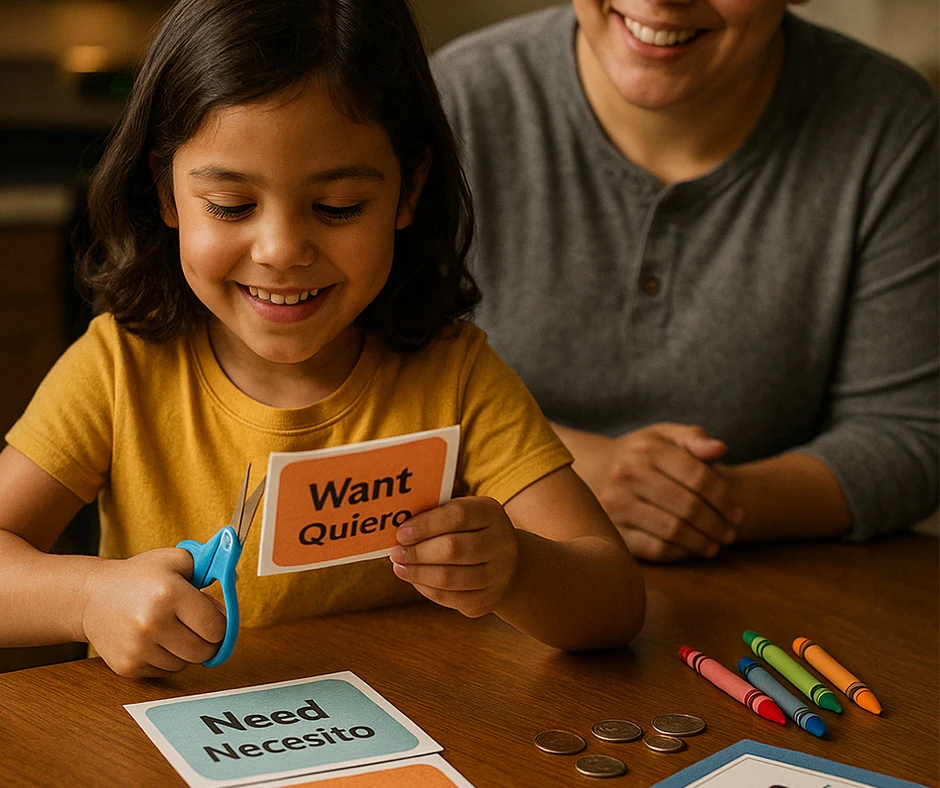Why children's financial education changes everything: start teaching today
More than giving them material objects, the most valuable thing is teaching them to make smart decisions about money from a young age. Early financial education isn't just a subject: it's a life skill.
And the best part: you can start today, without complicated formulas, with fun financial activities, stories, and everyday decisions that build positive financial habits.

“Instead of buying your children everything you never had, teach them everything you were never taught.” —Bruce Lee
More than giving them material objects, the most valuable thing is teaching them to make smart decisions about money from a young age. Early financial education isn't just a subject: it's a life skill.
And the best part: you can start today, without complicated formulas, with fun financial activities, stories, and everyday decisions that build positive financial habits.
Why teaching personal finance to children from the age of 6 matters
Between the ages of 3 and 6, children's brains experience their greatest cognitive development: self-control, emotional intelligence, and the ability to make choices are developed. This is the ideal time to develop healthy financial habits.
According to the CFPB and recent studies such as the one published by Frontiers in Education (2024), children who learn about money before age 9 show greater financial self-confidence, better debt management, and decision-making skills.
Starting now isn't speeding them up. It's empowering them.
What does the “Be a Financial Hero” activity book include?
It's not just a workbook. It's a compass of financial and emotional intelligence.
- Bilingual Visual Glossary (penny, nickel, dime, quarter, dollar): Real-world vocabulary for K-6 financial education.
- Shopping Traffic Light & Money Villains: Managing Emotions When Spending, Self-Control, and Emotional Regulation.
- Savings Path: Set goals and understand how to achieve financial objectives.
- $20 “Act Like a Boss” Budget: Planning Spending and Prioritizing Needs vs. Wants
- Money-values connection: activities that link savings with gratitude, empathy, and responsibility.
Do you want your child to learn to differentiate between “want” and “need”?
This skill reduces impulse buying in children and strengthens their emotional independence. Teaching the difference between wants and needs transforms their spending habits.
👉 Check page 9 of the booklet. There you'll find the "Want It or Need It" activity. Cut out the cards, sort them, and reflect with your child each week.
“Teach your children early what you learn late in life.” —Richard Feynman
What changes when we teach financial literacy at home?
| When they learn… | You experience… |
| They separate desires from needs | Less tantrums and more emotional reflection |
| They control impulses when buying | More calm in exits and decisions |
| They save with clear goals | Pride and perseverance |
| They understand the value of money | Meaningful conversations |
| Practice English and Spanish with examples | Useful bilingualism and real-life situations |
Conclusion: Small habits, big decisions
Teaching children about finances from the age of 6 isn't about "adulting" them: it's about preparing them to be emotionally aware and financially responsible adults.
A simple activity book can open the door to a life of purpose.
Start today. One activity at a time. One decision at a time. That will be your true treasure.





